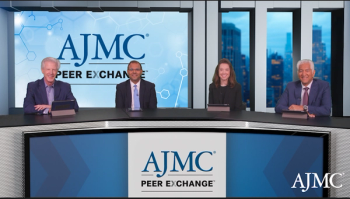
When to Add an SGLT2 Inhibitor to Treatment Regimen
A key opinion leader considers the optimal timing of adding an SGLT2 inhibitor to the treatment for patients with heart failure.
Episodes in this series

John McMurray, MBChB: SGLT2 inhibitors are the most recent development in the therapeutics of heart failure with reduced ejection fraction. I suppose that, theoretically, they might be considered the last to be added in terms of the lifesaving therapies we have available. That’s the way we’ve regarded treatments in the past: You add the most recently introduced therapy after you have added the previously proved treatments, but it will be different for SGLT2 inhibitors.
They’re simple to use. They have virtually no adverse effects. They require little monitoring. Most important, there is no dose titration. Almost all the drugs that we have available for heart failure with reduced ejection fraction have to be introduced at a low dose and are then gradually titrated up over time, and that can be many weeks or even months of dose titration with regular checking of blood pressure, electrolytes, and renal function each time you increase the dose.
That’s not the case with SGLT2 inhibitors: It’s 1 dose for everybody, and that’s it. That’s going to mean that they will probably be introduced much earlier in the treatment pathway than you might otherwise expect. That will definitely be the key for patients with diabetes because these drugs were originally introduced as glucose-lowering therapy for patients with type 2 diabetes. I know that there are drugs for heart failure and for chronic kidney disease, but in a patient who has got heart failure and type 2 diabetes, this would be a treatment that would manage both of those conditions with 1 single treatment to deal with both problems.
In the space of a year, we’ve recently had 2 large morbidity-mortality trials report with 2 different SGLT2 inhibitors: dapagliflozin and the DAPA-HF trial and the empagliflozin in the EMPEROR-Reduced trial. These were both trials in patients with heart failure and reduced ejection fraction, although they had slightly different inclusion and exclusion criteria. They also had slightly different primary end points, although they were essentially the composite of timed first occurrence of cardiovascular death or heart failure hospitalization. That primary end point was reduced by 26% in the DAPA-HF trial and 25% in the EMPEROR-Reduced trial.
The results were incredibly similar, which was generally true for all the secondary end points, including improvement in symptoms. Mortality wasn’t reduced in the EMPEROR-Reduced trial, but it was reduced in DAPA-HF. That’s a statistics or numbers issue; I don’t think it’s from any difference between the drugs. If you put the 2 trials together, there’s a clear reduction in cardiovascular and all-causes mortality, as well as around a 30% reduction in heart failure hospitalization.
Remarkably, these drugs also slowed the rate of decline in renal function over time. That’s important for heart failure doctors because decline in kidney function often means that we have to discontinue other lifesaving drugs in patients. In DAPA-HF, we [at the University of Glasgow] at least showed that dapagliflozin also substantially reduce the risk of developing new diabetes. I mentioned that heart failure is a very diabetogenic state; diabetes is a common comorbidity. Here is a treatment that reduced the risk of developing diabetes in these patients by close to a third, so this is an important breakthrough with tremendously strong evidence from 2 large trials in a short period of time.
In most of our recent trials, it’s also been great to see how well treated the patients have been. There was background use of renal angiotensin symptom blockers over 90%, background use of beta-blockers over 90%, and background use of mineralocorticoid receptor antagonist increase over 70% compared with maybe 40% a few years ago. We’ve even seen the proportion of patients receiving sacubitril-valsartan increase substantially to almost 20% in the EMPEROR-Reduced trial.
I don’t know the details of EMPEROR-Reduced, but in other trials—DAPA-HF, for example—use of sacubitril-valsartan is much greater in the United States, Canada, and Western Europe than it is in other parts of the world. We are seeing rates of use in the United States and Canada, depending on how recent the trial is, with anywhere between a third and half of patients on sacubitril-valsartan. The great news is that the new therapies, the SGLT2 inhibitors for example, are just as effective when added to that excellent background therapy, including sacubitril-valsartan. This is a new incremental additive benefit.
When we look at the results of trials, we always look at subgroups of patients, and what we generally hope to see is that the treatment effect will be pretty consistent across all the subgroups. For the SGLT2 inhibitors and for sacubitril-valsartan, that’s certainly been true, at least when we think about relative risk reductions. Of course, when we look at subgroups, there are often patients who are at high risks. For example, if you look at patients with chronic kidney disease and heart failure, they are a particularly high-risk group of patients. If they get the same relative risk reduction, which they do with SGLT2 inhibitors, then their absolute risk reduction is large. Their number needed to treat is much smaller, so generally, when we see some variation in the size and benefit of treatments for heart failure, it’s in relation to the absolute risk reduction and the absolute benefit rather than the relative risk reduction. It’s uncommon to see much variation in relative risk reduction.
Some of the problems that all physicians are thinking about at the moment are these: “Do I have to use all these treatments together, and in what order should I use them?” While it’s tempting to say, “I know that the benefit of an SGLT2 inhibitor, for example, is pretty much the same as the benefit of sacubitril-valsartan, so I may have to use only 1 of these rather than both together.” I would certainly plead with my colleagues to use both together, because what we have shown is that the benefit of all the drugs used in heart failure are additive.
They work through distinct pathophysiological pathways, so when you use them together, you get added benefits. We published to show the benefits of using all the lifesaving drugs together. In other words, this is a comprehensive therapy: those benefits are enormous in terms of improving survival. In a 65-year-old man, you might be talking about up to 5 additional years of survival. That’s a huge incremental benefit of using all those treatments together as opposed to using only the most basic treatment. I make the plea for not regarding these as treatments to be used individually or to use only some of them. I make the argument that they should be used optimally and together.
Newsletter
Stay ahead of policy, cost, and value—subscribe to AJMC for expert insights at the intersection of clinical care and health economics.
















































